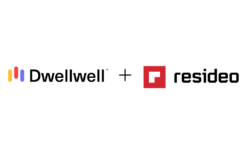Monitoring Value: Do You Know Your Company’s True Worth?
Today, buyers and lenders have much different metrics when it comes to determining what a fair and equitable purchase price is for a given customer base.

(Image: VectorMine/stock.adobe.com)
We all know this: there is no guarantee how long anything will last. Your health, your marriage, the roof over your head … these and more are all critical, and yet, we too often resist the foresight, with which we are all blessed, to prepare for these and other of life’s changes.
As business professionals, it is not only prudent but essential that we be prepared, not only for changes in the market or in technologies or in the availability of qualified personnel, but for perhaps the biggest decision of all, to either sell your business or to acquire another.
There have been mergers and acquisitions going on in the alarm industry for as long as I have been a part of it, now more than 40 years, so there is nothing new about that, but what is new the past few years are the types of buyers and the level of oversight coming from lenders or private equity.
That trend means much needs to be done far ahead of the final decision to divest or acquire even if you cannot now envision the need for either. As a footnote, it can also be the impetus for a more efficiently run business that is better prepared for inevitable change.
Today, buyers and lenders have much different metrics when it comes to determining what a fair and equitable purchase price is for a given customer base; the days of just taking monthly recurring revenue and applying a multiple to it are for the most part gone. The methodology that has emerged requires a lot more data and very accurate auditable metrics about the customer base.
Because of the sheer volume of dealers we support at Rapid Response Monitoring, we see a lot of buying and selling and are involved in most of the transactions one way or another. We often supply data for a lender or a buyer, and, in many cases, we are called upon to analyze the data to determine a cost-to-monitor. Sadly, in almost every case the dealer is completely unprepared for this kind of transaction and is compelled to rely on us to help them pull all this together.
Usually, there are data elements that, heretofore, were never a consideration but are now becoming a significant factor in account base valuation. The following will help to illustrate some of the key metrics we get asked about and how you can, as a dealer or monitoring center, work toward keeping the value of a customer base readily and effectively apparent should major opportunities come knocking on the door.
Attrition: This is always part of the equation but also one of the most misunderstood metrics, having several ways to calculate it. Installing Dealers should know their attrition rates and continue to monitor them as a complete customer base but also broken down by different types of accounts such as commercial/residential, chain accounts/fire accounts and others; a lender might only want to lend differing amounts for each group of accounts.
I mentioned there are many ways to calculate attrition. The simple way? Imagine that you stop selling new accounts: calculate how many you lose each month and then do the math for a year. For example, if you had 1,000 accounts and 10 cancelled each month you would lose 120 accounts every year, and that would give you a 12% annualized attrition rate. Again, there are a lot of ways to do this, but this will give you a very quick idea of where you’re at.
Portability of Account Base: If necessary, the effort to move the accounts to another monitoring center can reveal time-consuming and expensive preparations. You need to make sure that all your accounts can be moved without reprogramming. You also need to make sure that things like voice lines and SMS numbers are portable and that the outbound Caller ID can be spoofed to the same numbers so that when a transition to another center does occur your subscribers don’t know the difference.
Account Performance: This is another metric that was not a concern previously. Now, with most wholesale centers’ pricing based on activity and full-service centers more greatly concerned with staffing, how these accounts are performing becomes a key metric and one requiring greater attention.
Among the most important performance statistics deserving your attention is the OHE (Operator Handled Event) ratio or Alarm Factor. It indicates how many times a month each system comes into alarm status and must be handled by an operator. For example, if you have 1,000 accounts and 200 of them had an event requiring a dispatcher, those accounts would have an OHE ratio of .2 (that or less indicates a well managed residential customer base. If yours is above that you need to work on the base to reduce that type of activity. The lower you get it, the more valuable the base is worth and the more economically you can provide monitoring.
The second thing that gets looked at closely will be the average handle time (AHT), or how long it takes to process an alarm event. It not only means there is a cost factor when long handle times become apparent, but that it is also likely you have issues like very complicated instruction sets, long call lists or people on the call lists that don’t respond. Time is money: pay attention to how long it takes to process your accounts.
The last metric that gets looked at as part of account performance is the voice traffic that’s generated as part of the customer base, typically the number and AHT of inbound calls. Generally, these are functions like putting accounts on test, getting test results, calling about alarm information or calling in about problems with the system. Today, most of these calls can be processed by self-service tools like mobile or web applications, IVR or SMS tools. Again, time is money: if you have a lot of this kind of voice traffic, work towards transferring it to self-service tools.
Radios: Given the uncertainty of communications standards these days, this probably goes without saying but it is a critical factor for valuation: how current are the radios in the field? if you have a lot of 3G radios right now, that is going to lower the valuation considerably compared to a base that has already completed the LTE conversion. While most of you have this under control, you must still pay attention to it as 5G radios start to become available and start to move subscribers to those radios ahead of the LTE sunset that is already looming out there.
Types of Equipment: This has become a large factor in purchases, and it includes the panel manufacturer and model numbers, as many older vendors are now gone, some older dialers are not supported with dialer capture, or you may not be able to reprogram or even service some of the equipment out there. The flipside of this issue, of course, is that you do a lot of upgrades, and that increases valuations.
I could easily write three or four articles about all of this, going over all the details and metrics that are getting looked at closely today. It’s an important matter that most of you will likely face one day. The key takeaway is that you work with a monitoring center, or if you are a full-service company develop the reporting capabilities to have these key metrics easily available. This will help keep your company as valuable as possible.
You never know what life is going to throw your way and trying to fix all this at once is impossible. Nevertheless, you can make a significant change in the value and viability of your business over the course of a year if you are diligent and active every day.
If you enjoyed this article and want to receive more valuable industry content like this, click here to sign up for our FREE digital newsletters!

Security Is Our Business, Too
For professionals who recommend, buy and install all types of electronic security equipment, a free subscription to Commercial Integrator + Security Sales & Integration is like having a consultant on call. You’ll find an ideal balance of technology and business coverage, with installation tips and techniques for products and updates on how to add to your bottom line.
A FREE subscription to the top resource for security and integration industry will prove to be invaluable.








